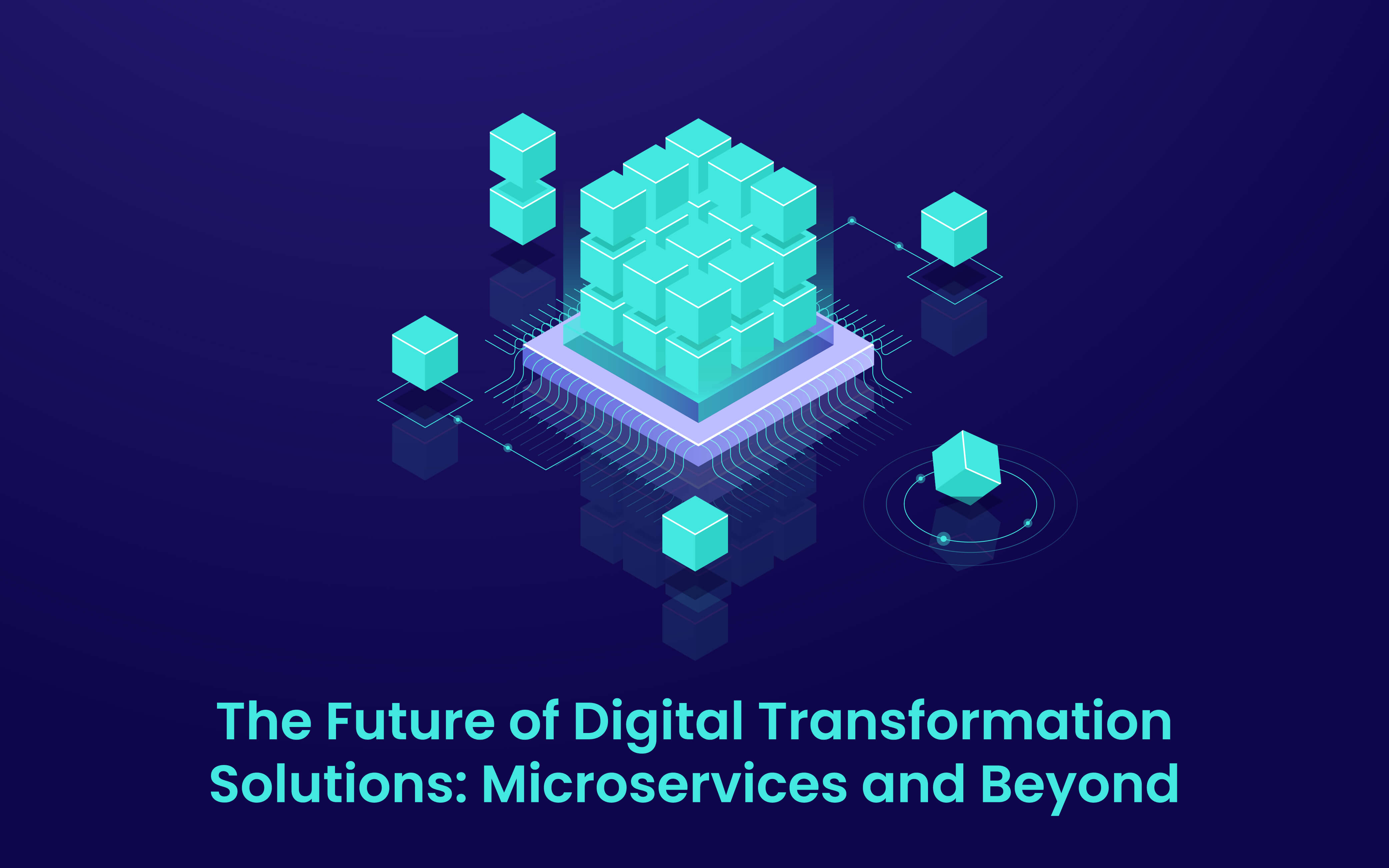Blogs
To know about all things Digitisation and Innovation read our blogs here.
Digital Transformation
The Future of Digital Transformation Solutions: Microservices and Beyond
SID Global Solutions
8 March 2023

Introduction
Digital transformation has been one of the hottest topics in the business world over the last decade, as companies increasingly rely on technology to achieve their strategic objectives. As the pace of technological innovation accelerates, organizations must stay ahead of the curve to remain competitive. One of the key trends driving digital transformation is the adoption of microservices architecture, which offers numerous benefits over traditional monolithic software architecture. In this guide, we will explore the future of digital transformation solutions and the role that microservices will play in it.
What are Microservices?
Microservices are a software architecture pattern in which applications are composed of small, independently deployable services. Each service performs a specific function, and communicates with other services through well-defined APIs. The services are designed to be scalable, resilient, and fault-tolerant, which means that the failure of one service does not affect the operation of other services.
Also Read: Digital Skills for Improved Collaboration & Communication in Digital Transformation
The Benefits of Microservices
Microservices offer numerous benefits over traditional monolithic software architecture. Some of the key advantages include:
- Scalability: Microservices are designed to be easily scalable. Each service can be scaled independently based on its specific resource requirements, which means that the overall application can handle more traffic without being slowed down by any single component.
- Resilience: Microservices are designed to be resilient to failure. If one service fails, the other services continue to operate without being affected.
- Flexibility: Microservices are designed to be flexible. They can be deployed and updated independently of one another, which means that changes can be made more quickly and without affecting the entire application.
- Agility: Microservices are designed to be agile. They allow developers to work on different parts of the application independently, which means that changes can be made more quickly and without affecting the entire application.
- Cost-effective: Microservices are cost-effective. They require less hardware and infrastructure than monolithic applications, which means that organizations can save money on hardware and maintenance costs.
The adoption of microservices architecture is growing rapidly, and it is expected to continue to do so in the future. According to a report by MarketsandMarkets, the global microservices market is expected to grow from $2.2 billion in 2020 to $6.8 billion by 2025, at a compound annual growth rate (CAGR) of 25.5%. This growth is being driven by several factors:
- Cloud Computing: The rise of cloud computing has made it easier and more cost-effective to deploy microservices. Cloud platforms provide the infrastructure and tools necessary to deploy and manage microservices at scale.
- DevOps: The DevOps movement emphasizes collaboration and automation between development and operations teams. Microservices are a natural fit for DevOps, as they allow developers to work independently and deploy code more quickly.
- Big Data: The explosion of data has created a need for scalable and flexible architectures that can handle large volumes of data. Microservices are well-suited for big data applications, as they can be scaled up or down based on the specific resource requirements of each service.
- Artificial Intelligence (AI): AI and machine learning applications require scalable and flexible architectures that can handle large volumes of data. Microservices are well-suited for AI applications, as they allow developers to deploy and scale individual services as needed.
- Internet of Things (IoT): The rise of IoT devices has created a need for scalable and flexible architectures that can handle large volumes of data. Microservices are well-suited for IoT applications, as they allow developers to deploy and scale individual services as needed.
Also Read: Digital Transformation: How a Modern Tech Stack Can Drive Success?
Conclusion
In conclusion, microservices architecture is a key trend driving digital transformation solutions. As the pace of technological innovation accelerates, organizations must stay ahead of the curve by adopting microservices architecture to achieve scalability, resilience, flexibility, agility, and cost-effectiveness. The future of digital transformation solutions will continue to rely heavily on microservices, as cloud computing, DevOps, big data, AI, and IoT applications continue to grow in importance.
However, microservices are not a silver bullet solution. There are several challenges associated with implementing and managing microservices, such as increased complexity, higher operational overhead, and the need for specialized skills. Organizations must carefully weigh the benefits and drawbacks of microservices before making the decision to adopt them.
In addition, microservices are just one piece of the digital transformation puzzle. To achieve true digital transformation, organizations must also focus on other areas, such as data management, cybersecurity, customer experience, and business process automation.
The future of digital transformation solutions will rely heavily on microservices architecture, but organizations must approach the adoption of microservices with caution and a clear understanding of the benefits and drawbacks. As technology continues to evolve, organizations must remain agile and adaptable to stay ahead of the curve and achieve their strategic objectives.
SID Global Solutions is a leader in providing digital transformation solutions to clients across a range of industries. We understand that digital transformation is essential for organizations to remain competitive in today’s fast-paced business environment, and we are committed to helping our clients achieve their strategic objectives through the adoption of microservices architecture.
Our team of experienced professionals has a deep understanding of microservices architecture and its benefits, and we work closely with clients to design and implement microservices-based solutions that are tailored to their specific needs. We provide end-to-end services, from initial assessment and planning to deployment and ongoing support, to ensure that our clients achieve maximum value from their investment in microservices.
At SID Global Solutions, we are passionate about helping our clients achieve digital transformation through the adoption of microservices architecture. We combine our technical expertise with a deep understanding of our clients’ business goals to deliver solutions that are scalable, resilient, flexible, agile, and cost-effective. Contact us today to learn how we can help your organization achieve digital transformation through the adoption of microservices architecture.
Also Read: Digital Transformation Challenges That Organizations Must Overcome









